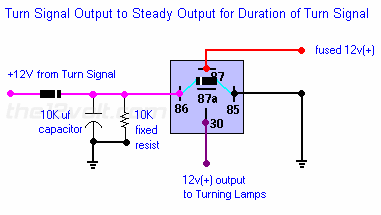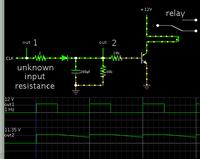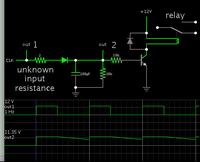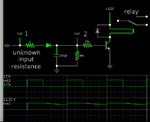DPluss
Junior Member level 2

Hello guys!
I'm a real beginner in electronics, I need a little help, I'll explain my circuit first, then I will get to the problem that I'm having issues to solve.
I am setting up a car signal light DRL like the what the US cars have, basicly dimming the 21W signal bulb by regulating the 12V input to 6V from my default parking light, so when I turn my parking lights on, the indicator bulbs come on aswell, and when I signal, it gets all the 21W it needs. But this is not the problem, I want to upgrade this by adding a relay, that switches between the 6V and the default 12V input, so when I turn on indicator it switches the relay so it breaks the 6V circuit and back to the stock 12V where the flashes are coming from and this way my 6v DLR isnt on while indicating! The problem is, that I cant power the realy with the indicators voltage because its momentary and it doesnt keep the relay closed... I tried experimenting with capacitors and adding another relay into the circuit, no luck... I'm thinking of somekind of timer thing that when I turn on the signal light, gets a signal powers the relay then after 0.6 seconds it shuts off the relay if it doesnt get a indicator signal again.
I know this probably sounds confusing, it is for me too, im really a beginner and any help would be really aprecciated! I'm looking for the easiest way to do this
Here's the circuit:
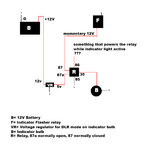
I'm a real beginner in electronics, I need a little help, I'll explain my circuit first, then I will get to the problem that I'm having issues to solve.
I am setting up a car signal light DRL like the what the US cars have, basicly dimming the 21W signal bulb by regulating the 12V input to 6V from my default parking light, so when I turn my parking lights on, the indicator bulbs come on aswell, and when I signal, it gets all the 21W it needs. But this is not the problem, I want to upgrade this by adding a relay, that switches between the 6V and the default 12V input, so when I turn on indicator it switches the relay so it breaks the 6V circuit and back to the stock 12V where the flashes are coming from and this way my 6v DLR isnt on while indicating! The problem is, that I cant power the realy with the indicators voltage because its momentary and it doesnt keep the relay closed... I tried experimenting with capacitors and adding another relay into the circuit, no luck... I'm thinking of somekind of timer thing that when I turn on the signal light, gets a signal powers the relay then after 0.6 seconds it shuts off the relay if it doesnt get a indicator signal again.
I know this probably sounds confusing, it is for me too, im really a beginner and any help would be really aprecciated! I'm looking for the easiest way to do this
Here's the circuit:



